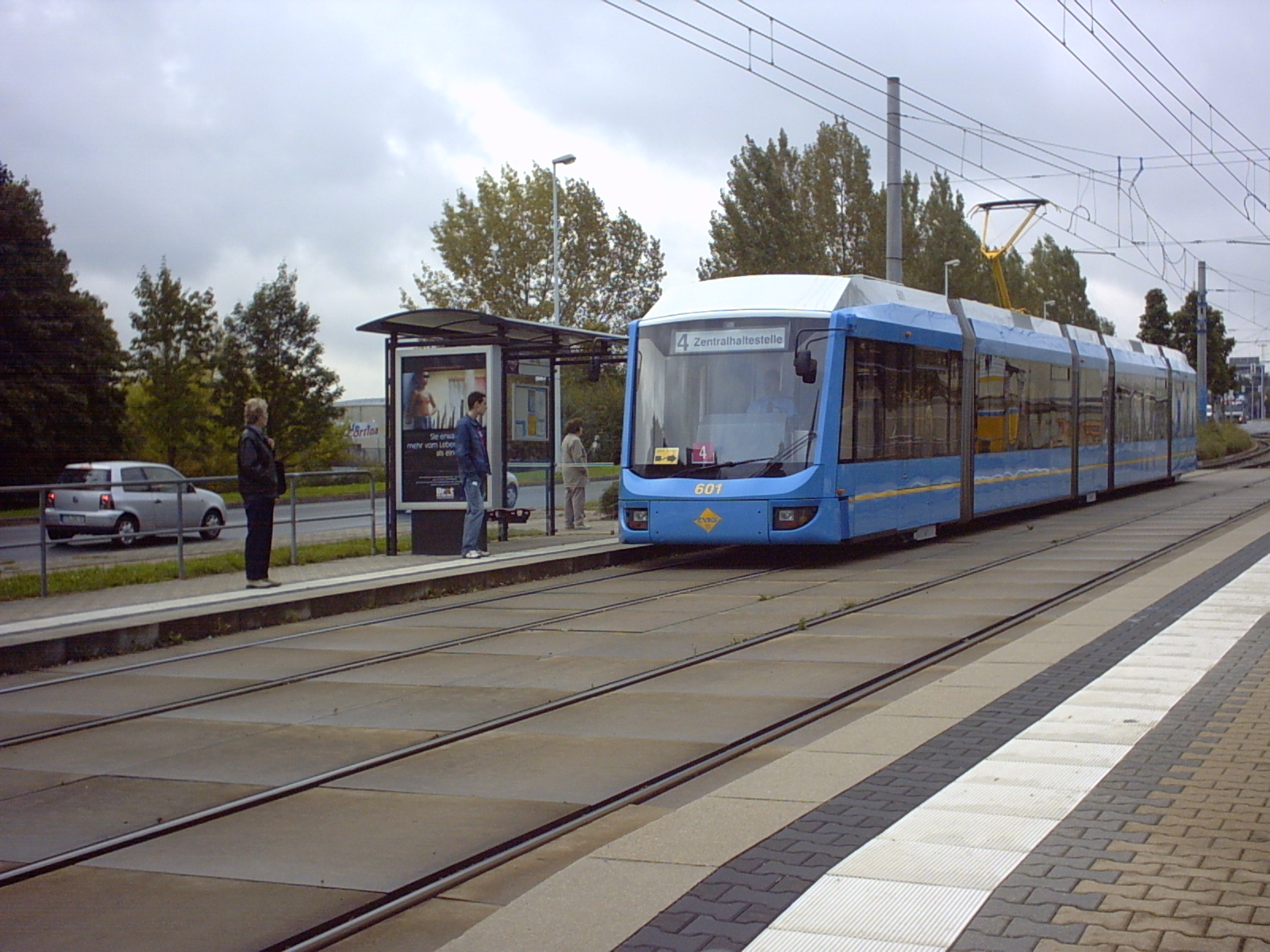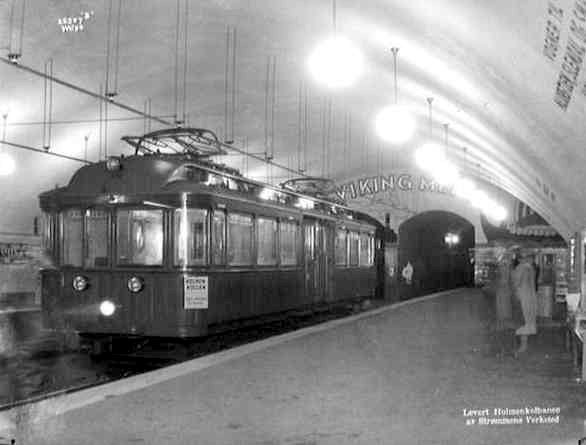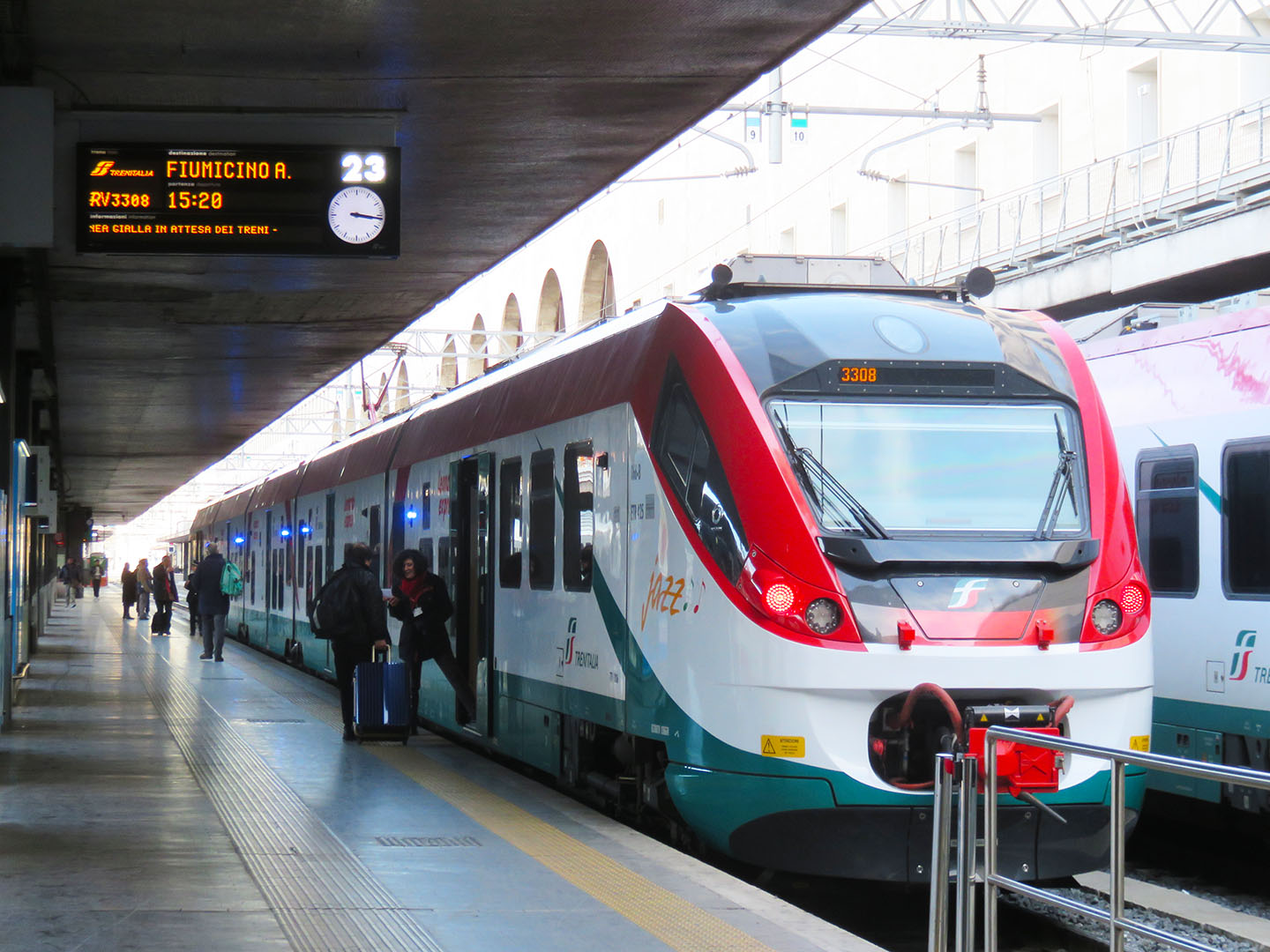|
Lilleaker Line
The Lilleaker Line () is a suburban tramway from Skøyen in Oslo westwards to Jar,_Norway, Jar, Bærum in Norway. It is operated by Line 13 from Ljabru tram stop, Ljabru to Bekkestua (station), Bekkestua of the Oslo Tramway, operated by Oslo Sporvognsdrift. The line continues on the Oslo Metro west of Jar as part of the Kolsås Line, and as a street tramway on the Oslo tramway system at Skøyen as the Skøyen Line. Route The Lilleaker Line runs from Skøyen to Jar. The line is a standard gauge, double track light rail line with 750 volt overhead lines, overhead wire. At Skøyen it connects with the Skøyen Line of the Oslo Tramway and at Jar to the Kolsås Line of the Oslo Metro. Most of the route is dominated by housing. At Skøyen, there is a short walk to Skøyen Station on the mainline Drammen Line. It serves all west-bound trains of the Oslo Commuter Rail, some regional trains and the Airport rail link, Airport Express Train. The station is also an important bus hub se ... [...More Info...] [...Related Items...] OR: [Wikipedia] [Google] [Baidu] |
SL95
SL95 is a series of 32 low-floor tram, low-floor, articulated tram, articulated trams operated on the Oslo Tramway. The series was built by Italian rail manufacturer Gio. Ansaldo & C., Ansaldo/Firema, later known as AnsaldoBreda (now Hitachi Rail Italy), and delivered between 1999 and 2004. Capacity for the eight-axle, three-section vehicles is 212 passengers, of which 88 can be seated. The name derives from being ordered in 1995. Original plans called for the delivery to be between 1997 and 1998. Delivery took many years due to a magnitude of technical flaws, including high noise levels, freezing during the winter and corrosion. The trams are long, wide and tall. The aluminum vehicles weigh and have a power output of . The trams operate all services on lines 13, 17 and 18. Due to their heavy weight and large turning radius they are unsuitable for the other lines. However, they are the only bi-directional trams in the fleet, and are needed on lines 17 and 18 along the Ullevål ... [...More Info...] [...Related Items...] OR: [Wikipedia] [Google] [Baidu] |
Oslo Metro
The Oslo Metro ( or or simply ) is the rapid transit system of Oslo, Norway, operated by Sporveien T-banen on contract from the transit authority Ruter. The network consists of five lines that all run through the city centre, with a total length of , serving 101 stations of which 17 are underground or indoors. In addition to serving 14 out of the 15 boroughs of Oslo, two lines run to Kolsås and Østerås, in the neighbouring municipality of Bærum. In 2016, the system had an annual ridership of 118 million. The first rapid transit line, the Holmenkollen Line, opened in 1898, with the branch Røa Line opening in 1912. It became the first Nordic underground rapid transit system in 1928, when the underground line to Nationaltheatret was opened. After 1993 trains ran under the city between the eastern and western networks in the Common Tunnel, followed by the 2006 opening of the Ring Line. All the trains are operated with MX3000 stock. These replaced the older T1000 stock ... [...More Info...] [...Related Items...] OR: [Wikipedia] [Google] [Baidu] |
Ruter
Ruter AS is the public transport authority for Oslo and Akershus counties in Norway. Formally a limited company – 60% of its shares are owned by the Oslo county municipality and 40% by that of Akershus – it is responsible for the administration, funding, and marketing (but not direct operation) of public transport in the two counties, including buses, the Oslo Metro (''T-banen i Oslo''), Oslo Trams (''Trikken i Oslo''), and ferry services. Ruter also holds agreements with Entur concerning the regulation of fares on local and regional train services operated within the two counties. Operation The operation of services is performed by other companies: *Bus routes are subject to public service obligation, and operators include UniBuss, Nettbuss, Norgesbuss, Schau's Buss, and Nobina Norge. *The metro system is operated by Sporveien T-banen while the tramway is operated by Sporveien Trikken, both subsidiaries of the municipally owned Sporveien Oslo AS. *Ferries are op ... [...More Info...] [...Related Items...] OR: [Wikipedia] [Google] [Baidu] |
Norwegian State Railways
Norwegian, Norwayan, or Norsk may refer to: *Something of, from, or related to Norway, a country in northwestern Europe *Norwegians, both a nation and an ethnic group native to Norway *Demographics of Norway *Norwegian language, including the two official written forms: **Bokmål, literally "book language", used by 85–90% of the population of Norway **Nynorsk, literally "New Norwegian", used by 10–15% of the population of Norway *Norwegian Sea Norwegian or may also refer to: Norwegian *Norwegian Air Shuttle, an airline, trading as Norwegian ** Norwegian Long Haul, a defunct subsidiary of Norwegian Air Shuttle, flying long-haul flights * Norwegian Air Lines, a former airline, merged with Scandinavian Airlines in 1951 *Norwegian coupling, used for narrow-gauge railways *Norwegian Cruise Line, a cruise line *Norwegian Elkhound, a canine breed. * Norwegian Forest cat, a domestic feline breed *Norwegian Red, a breed of dairy cattle *Norwegian Township, Pennsylvania, USA Norsk ... [...More Info...] [...Related Items...] OR: [Wikipedia] [Google] [Baidu] |
Airport Rail Link
An airport rail link is a service providing passenger rail transport between an airport and a nearby city. Direct links operate straight from the airport terminal to the city, while other links require an intermediate use of a people mover or airport bus, shuttle bus. Advantages for the passenger include faster travel times and easy connections with other public transport. Advantages for the airport include increased patronage and enhanced accessibility for staff. Additionally, authorities have benefitted from less highway congestion, less pollution, and more business opportunities. History Although airport rail links have been a popular solution in Europe and Japan for decades, only recently have links been constructed in North America, South America, Africa, Oceania, and the rest of Asia. Some early examples of inter-city railway stations built to serve an airport include: The first rapid transit station to connect with an airport was Berlin's Berlin U-Bahn, U-Bahn U6 (Be ... [...More Info...] [...Related Items...] OR: [Wikipedia] [Google] [Baidu] |
Oslo Commuter Rail
Oslo Commuter Rail () is a commuter rail centered in Oslo, Norway, connecting the capital to six counties of Norway, counties in Eastern Norway. The system is operated by Vy (formerly NSB) and its subsidiary Vy Gjøvikbanen, using NSB Class 69, Class 69 and NSB Class 72, Class 72 electric multiple units (EMU). The network spans eight routes and 128 stations, with Oslo Central Station (Oslo S) as the central transport hub, hub. The trains run on of railway electrification system, electrified rail transport in Norway, mainline railway owned by the Bane NOR. Deficits are financed by the Ministry of Transport (Norway), Norwegian Ministry of Transport, although the network also has a ticketing cooperation with Ruter, the public transport authority in Oslo and Akershus. The network is the longest commuter rail network in the Nordic countries, and among top ten in Europe. The commuter rail operates mainly within Greater Oslo and two of the lines only provide services within the urb ... [...More Info...] [...Related Items...] OR: [Wikipedia] [Google] [Baidu] |
Drammen Line
The Drammen Line () is a railway line between Oslo and Drammen, Norway, which was opened on 7 October 1872. It serves all trains west of Oslo Central Station and is owned by Bane NOR. The line opened as a narrow gauge railway, and rebuilt to standard gauge between 1913 and 1922. In 1922, it became the first line on the national network to be electrified. The Lieråsen Tunnel shortened the line in 1973, and in 1980 the Oslo Tunnel was built, allowing the line to connect to the new Oslo Central Station. The Asker Line runs parallel to the Drammen Line, mostly in tunnels. At Drammen, the Vestfold Line branches off to the south while the Bergen Line and the Sørlandet Line continue together to Hokksund along the Randsfjorden Line. The entire line has double track due to the heavy traffic on the line. The longest Norwegian railway bridge is just before Drammen where the line crosses the Drammen river. That bridge is 454 metres long. History Both Drammen and Oslo were important ... [...More Info...] [...Related Items...] OR: [Wikipedia] [Google] [Baidu] |
Skøyen Station
Skøyen Station () is a railway station located at Skøyen in Oslo, Norway. It is situated on the Drammen Line, from Oslo Central Station. It is served by regional trains and the Oslo Commuter Rail, operated by Vy, as well as by the Airport Express Train. The station is elevated and has two island platforms and four tracks. The station opened along with the Drammen Line on 7 October 1872 with a station building designed by Georg Andreas Bull. The station was originally named Tyskestranden, taking the name Bygdø in 1876, Skøien in 1903 and the current name in 1921. The station received a major upgrade between 1915 and 1922, which included elevating the tracks, a new station designed by Eivind Gleditsch, double track and electrification. The station was further upgraded by plans designed by Arne Henriksen to the current state between 1996 and 1998. History Skøyen Station was one of five original stations on the Drammen Line, which opened on 7 October 1872. The line was ori ... [...More Info...] [...Related Items...] OR: [Wikipedia] [Google] [Baidu] |
Lokaltrafikk
''Lokaltrafikk'' is a quarterly magazine published by Lokaltrafikkhistorisk Forening and Sporveishistorisk Forening in Oslo, Norway. History and profile ''Lokaltrafikk'' was founded in 1986. It is dominated by news and feature articles about domestic tram, rapid transit and light rail, but also has a news section and featured articles about international urban rail transport and domestic bus transport. See also * List of railroad-related periodicals A list is a set of discrete items of information collected and set forth in some format for utility, entertainment, or other purposes. A list may be memorialized in any number of ways, including existing only in the mind of the list-maker, but ... References 1986 establishments in Norway Magazines established in 1986 Magazines published in Oslo Norwegian-language magazines Quarterly magazines published in Norway Rail transport magazines published in Norway {{Norway-mag-stub ... [...More Info...] [...Related Items...] OR: [Wikipedia] [Google] [Baidu] |
Overhead Lines
An overhead line or overhead wire is an electrical cable that is used to transmit electrical energy to electric locomotives, Electric multiple unit, electric multiple units, trolleybuses or trams. The generic term used by the International Union of Railways for the technology is ''overhead line''. It is known variously as overhead catenary, overhead contact line (OCL), overhead contact system (OCS), overhead equipment (OHE), overhead line equipment (OLE or OHLE), overhead lines (OHL), overhead wiring (OHW), traction wire, and trolley wire. An overhead line consists of one or more wires (or Overhead conductor rail, rails, particularly in tunnels) situated over rail tracks, raised to a high electrical potential by connection to feeder stations at regularly spaced intervals along the track. The feeder stations are usually fed from a High voltage, high-voltage Electricity distribution, electrical grid. Overview Electric trains that collect their current from overhead lines use a de ... [...More Info...] [...Related Items...] OR: [Wikipedia] [Google] [Baidu] |
Double Track
A double-track railway usually involves running one track in each direction, compared to a single-track railway where trains in both directions share the same track. Overview In the earliest days of railways in the United Kingdom, most lines were built as double-track because of the difficulty of co-ordinating operations before the invention of the telegraph. The lines also tended to be busy enough to be beyond the capacity of a single track. In the early days the Board of Trade did not consider any single-track railway line to be complete. In the earliest days of railways in the United States most lines were built as single-track for reasons of cost, and very inefficient timetable working systems were used to prevent head-on collisions on single lines. This improved with the development of the telegraph and the train order system. Operation Handedness In any given country, rail traffic generally runs to one side of a double-track line, not always the same side ... [...More Info...] [...Related Items...] OR: [Wikipedia] [Google] [Baidu] |
Standard Gauge
A standard-gauge railway is a railway with a track gauge of . The standard gauge is also called Stephenson gauge (after George Stephenson), international gauge, UIC gauge, uniform gauge, normal gauge in Europe, and SGR in East Africa. It is the most widely used track gauge around the world, with about 55% of the lines in the world using it. All high-speed rail lines use standard gauge except High-speed rail in Russia, those in Russia, High-speed rail in Finland, Finland, High-speed rail in Uzbekistan, Uzbekistan, and some line sections in High-speed rail in Spain, Spain. The distance between the inside edges of the heads of the rails is defined to be 1,435 mm except in the United States, Canada, and on some heritage British lines, where it is defined in Imperial and US customary measurement systems, U.S. customary/Imperial units, British Imperial units as exactly "four feet eight and one half inches", which is equivalent to 1,435.1mm. History As railways developed and expa ... [...More Info...] [...Related Items...] OR: [Wikipedia] [Google] [Baidu] |




